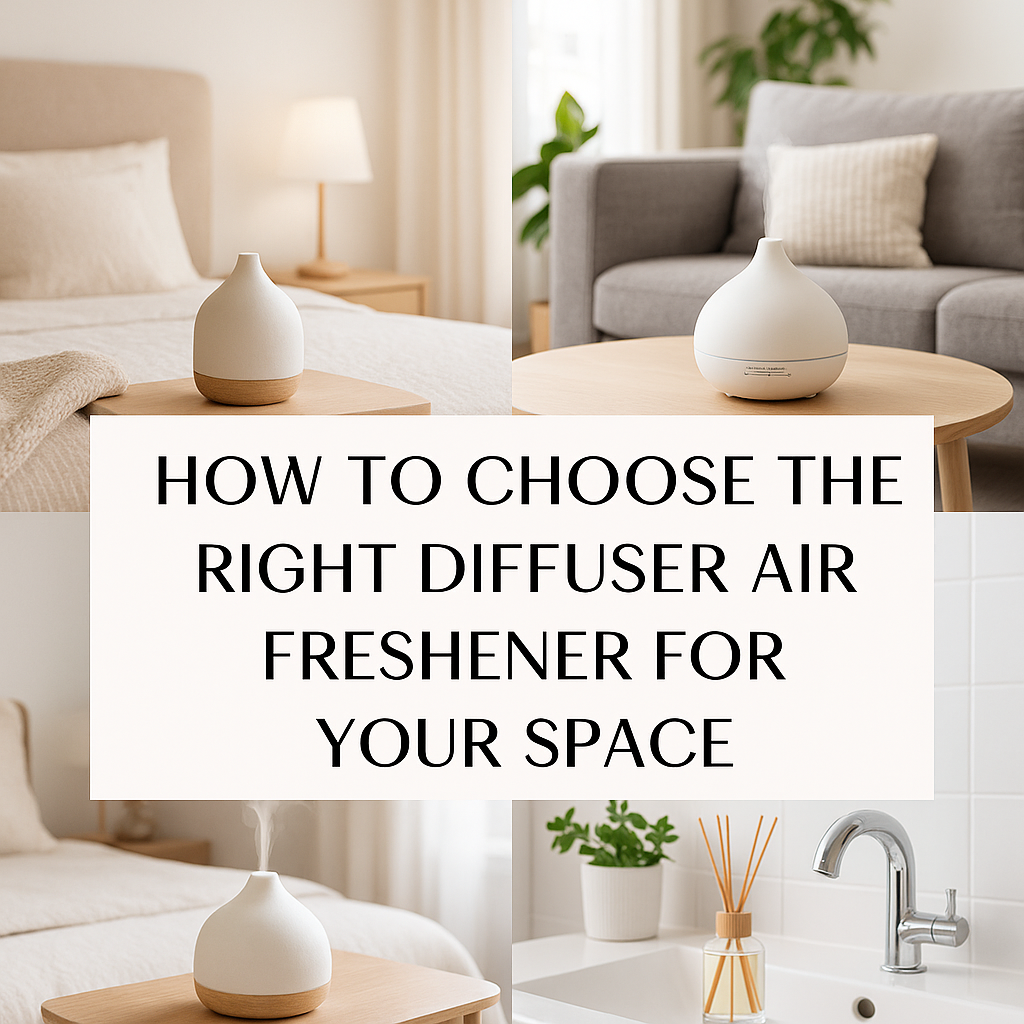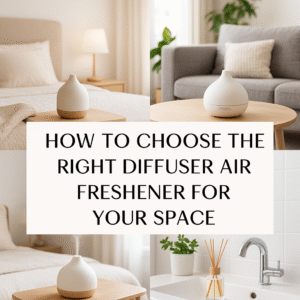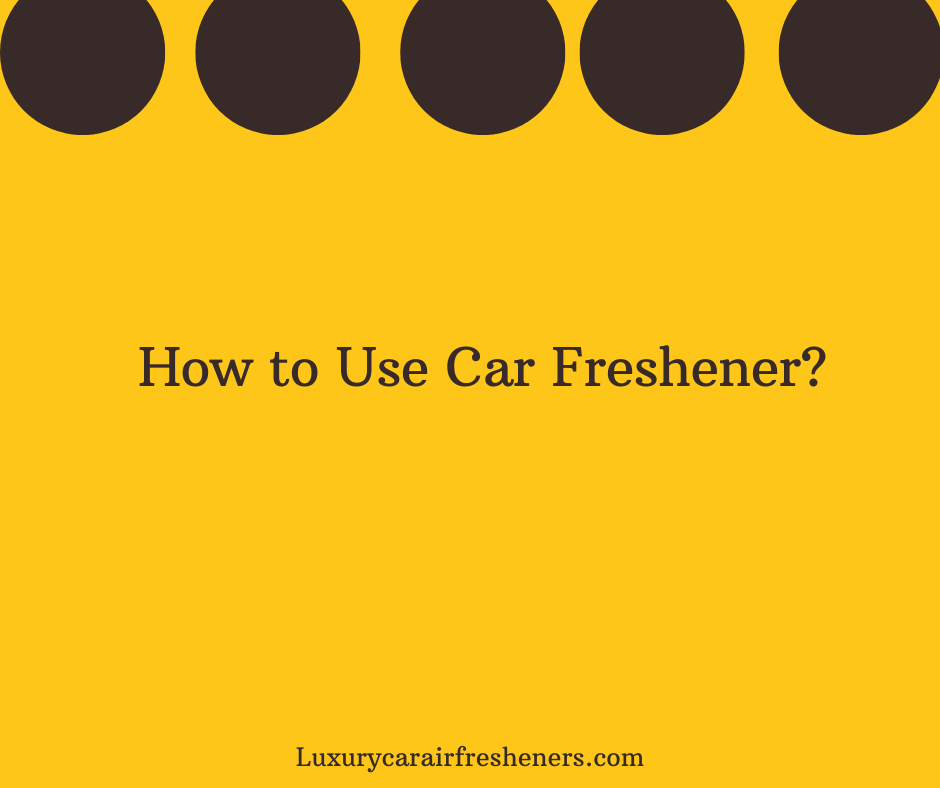How to Choose the Right Diffuser Air Freshener for Your Space
Your complete guide to transforming your home’s ambiance, one aromatic drop at a time. Let’s find your perfect match.

Walking into a room that smells incredible is a universal pleasure. It can instantly lift your mood, calm your senses, or energize your mind. While candles and sprays have their place, the essential oil diffuser has become the champion of home fragrance for its subtlety, style, and wellness benefits. But with a sea of options online, how do you pick the right one?
It’s a question I’ve personally wrestled with. My first diffuser was a cheap, plastic model that barely scented my small office and gave up after three months. My second was a beautiful ceramic piece that looked great but was a nightmare to clean. Through trial, error, and a lot of research, I’ve learned what truly matters.
This guide is the culmination of that experience. We’re going to break down everything you need to know—from the different technologies to the key features that will make or break your experience. By the end, you’ll be able to confidently select a diffuser that perfectly fits your space, lifestyle, and aesthetic.
Quick Guide: Choosing Your Diffuser
- For Most People: An Ultrasonic Diffuser offers the best balance of aroma output, humidity, and price.
- For Purity & Potency: A Nebulizing Diffuser is for the aroma purist who wants the strongest, unaltered scent.
- Room Size is Key: Match the diffuser’s capacity and output to your room’s square footage for effective scenting.
- Look for Key Features: Auto shut-off, timer settings, and intermittent mist modes offer convenience and control.
- Material Matters: Choose materials like ceramic, glass, or wood for durability and style. BPA-free plastic is a good budget-friendly option.
First, Why a Diffuser? The Modern Scent Solution
Before we dive into the “how,” let’s quickly touch on the “why.” What makes diffusers stand out against other home fragrance options?
- No Flame, No Soot: Unlike candles, diffusers offer a worry-free way to scent your home without an open flame, making them safer around children and pets.
- Customizable Experience: You are in complete control. You can blend essential oils to create your own signature scents, adjusting the intensity to your liking. Feeling stressed? Lavender and chamomile. Need to focus? Rosemary and peppermint.
- Air Quality Benefits: Ultrasonic diffusers act as mini-humidifiers, adding moisture to the air, which can be a lifesaver during dry winter months in the U.S.
- Cost-Effective: A small bottle of essential oil can last for weeks or even months, often making it a more economical long-term choice than continually buying high-end candles or plug-in refills.
The Four Main Types of Diffusers Explained
Understanding the core technology behind diffusers is the first step. Each type works differently, offering unique pros and cons.
1. Ultrasonic Diffusers (The All-Rounder)
This is the most popular and widely available type of diffuser on the market. It uses water and electronic frequencies to create a fine mist of water and essential oil that is released into the air. A small vibrating disc under the water creates ultrasonic waves, breaking the oil and water into micro-particles.
Pros
- Acts as a gentle humidifier.
- Relatively quiet operation.
- Easy to clean and maintain.
- Very affordable and widely available.
Cons
- Scent is diluted with water.
- Requires regular refilling.
2. Nebulizing Diffusers (The Purist)
For those who want the most potent and pure aromatic experience, a nebulizer is the gold standard. It uses an air pump to atomize essential oils into fine particles without using heat or water. This process ensures the chemical composition of the oil remains unaltered, delivering a therapeutic-grade aroma.
Pros
- Most potent and concentrated aroma.
- No water or heat used.
- Elegant, often featuring glass and wood.
- Highly effective in large spaces.
Cons
- Uses oil much faster than other types.
- Can be louder due to the air pump.
- Typically more expensive.
3. Evaporative Diffusers (The Simple One)
This is one of the simplest methods. A small fan blows air through a pad or filter that has been saturated with essential oils. The air picks up the aroma and disperses it throughout the room. You’ll often find this mechanism in portable or car diffusers.
Pros
- Very quiet and simple to use.
- Great for small, personal spaces.
- Highly portable and often inexpensive.
Cons
- Less effective in larger rooms.
- Scent can fade quickly.
- Filter pads may need replacing.
4. Heat Diffusers (The Silent Type)
As the name suggests, these diffusers use a gentle heat source to warm the essential oil, causing it to evaporate into the air. While effective and silent, some purists argue that heat can alter the chemical structure and therapeutic properties of the oils. They are common in plug-in wall units.
Pros
- Completely silent operation.
- Low maintenance and easy to use.
- Very affordable.
Cons
- Heat can change the oil’s properties.
- Scent may not be as strong.
- Potential burn risk if not handled carefully.
The 5 Key Factors to Consider Before You Buy
Now that you know the types, let’s get practical. I’ve found these five factors to be the most critical in choosing a diffuser you’ll love and use for years.
Factor 1: Your Room Size
This is non-negotiable. A small diffuser in a large, open-plan living room will be completely ineffective. Check the manufacturer’s recommendation, which is usually listed in square feet.
- Small Spaces (up to 200 sq. ft.): Bedrooms, home offices, bathrooms. A compact ultrasonic diffuser (100-200ml tank) or an evaporative diffuser is perfect.
- Medium Spaces (200-400 sq. ft.): Master bedrooms, kitchens, smaller living rooms. Look for an ultrasonic diffuser with a 300-500ml tank and good mist output.
- Large Spaces (400+ sq. ft.): Open-concept living areas, great rooms. You’ll need a large-capacity ultrasonic model (500ml+) or a powerful nebulizing diffuser to make an impact.
Factor 2: Features and Functionality
Modern diffusers come packed with features. Here are the ones I find most useful:
- Timer Settings: Essential for control. Look for options like 1-hour, 3-hour, and 6-hour timers.
- Auto Shut-Off: A critical safety feature. The diffuser should automatically turn off when the water runs out to prevent damage to the unit.
- Intermittent Mist Mode: This is my personal favorite feature. It cycles the mist on and off (e.g., 30 seconds on, 30 seconds off), which extends the run time and prevents you from becoming “nose-blind” to the scent.
- Adjustable LED Lighting: Many diffusers double as nightlights. Look for models where you can dim the light, cycle through colors, or turn it off completely for sleep.
Factor 3: Material, Aesthetics, and Durability
A diffuser is an appliance that will be on display in your home, so it should match your decor. More importantly, the material affects its longevity.
- BPA-Free Plastic: The most common and affordable option. It’s lightweight and durable, but ensure it’s high-quality and BPA-free, as essential oils can degrade cheap plastics over time.
- Ceramic & Glass: These materials offer a premium, stylish look and are excellent for preserving the purity of the oils. They are heavier and more fragile but are a fantastic aesthetic choice.
- Wood & Bamboo: Provide a natural, calming look that fits well with minimalist or bohemian decor. Ensure the interior reservoir is made of a durable, non-reactive material.
Factor 4: Noise Level
If you’re planning to use the diffuser in a bedroom or a quiet office, the noise level is a major consideration. Ultrasonic models produce a very faint, soothing water-trickling sound. Nebulizers, due to their air pump, produce a more noticeable humming sound. Check user reviews for comments on noise.
Factor 5: Ease of Cleaning
Trust me on this one—if a diffuser is a pain to clean, you won’t use it. Oil residue can build up and clog the mechanism. A good diffuser should have a simple design with an easily accessible water tank that you can wipe clean with a cloth and some rubbing alcohol every few uses.
Our Top Diffuser Picks on Amazon for 2025
After considering all the factors above, here are a few highly-rated and trusted models available on Amazon that excel in different categories.

ASAKUKI 500ml Premium Essential Oil Diffuser
This is the workhorse of diffusers. With its large 500ml tank, it can run for over 16 hours. It features multiple timer settings, an intermittent mode, 7 LED light options, and a simple, easy-to-clean design. It’s the perfect balance of features, performance, and price for most U.S. households.
Check Price on Amazon
Vitruvi Ceramic Diffuser for Essential Oils
If aesthetics are your priority, this handcrafted ceramic diffuser is a beautiful addition to any decor. It’s more than just a pretty face; it has a 100ml capacity suitable for smaller rooms, multiple time settings, and a warm light option. It proves you don’t have to sacrifice style for function.
Check Price on Amazon
Aroma-Ace Essential Oil Atomizing Diffuser
For the serious aromatherapy enthusiast, the Aroma-Ace nebulizer is a top-tier choice. Made in the USA, it delivers a powerful, undiluted stream of pure essential oil. It features output and run-time controls to conserve oil and is built to last. It’s an investment in the most authentic scent experience.
Check Price on AmazonExtending Your Fragrance Journey
Once you’ve mastered the ambiance of your home, you might start thinking about other spaces. The principles of scenting can be applied anywhere, from your daily commute to specific odor challenges.
For instance, your car is another personal space where fragrance matters immensely. If you’re curious about taking that fresh scent on the road, exploring what are the best car air fresheners can open up a new world of portable aroma solutions. You might also wonder about longevity. Just like a diffuser’s run time, understanding how long do car air fresheners last helps you make an economical and effective choice.
And for tougher challenges, like persistent smoke smells, specialized solutions are key. Finding the best car air fresheners for smokers requires products designed for powerful odor elimination, a principle that applies to stubborn home odors as well.
Conclusion: Your Perfect Ambiance Awaits
Choosing the right diffuser air freshener doesn’t have to be overwhelming. By focusing on your room size, desired features, and personal style, you can narrow down the options to find the perfect device. Start with a quality ultrasonic model if you’re new to the world of diffusing; it offers the best all-around performance and value. For the aroma connoisseur, a nebulizer is an unbeatable upgrade.
Remember, the goal is to create a space that feels like a sanctuary. The right scent can reduce stress, improve focus, and make your house truly feel like a home. Happy diffusing!
Frequently Asked Questions
1. How many drops of essential oil should I put in my diffuser?
A good rule of thumb is 3-5 drops of essential oil per 100ml of water. However, you can adjust this based on the oil’s strength and your personal preference. Start with less and add more if needed.
2. Can I leave my diffuser on all night?
Yes, as long as it has an automatic shut-off feature. This is a crucial safety function that turns the device off when the water runs out. Using an intermittent setting is also great for overnight use to make the scent more subtle and extend the run time.
3. Are essential oil diffusers safe for pets?
It depends on the oil. Some essential oils, like tea tree, citrus, and peppermint, can be toxic to cats and dogs. Always research pet-safe essential oils, ensure the room is well-ventilated, and allow your pet a way to leave the room if they choose. Consult your veterinarian for specific advice.
4. How often should I clean my diffuser?
It’s best practice to rinse and wipe your diffuser dry after every use. A more thorough cleaning with rubbing alcohol or white vinegar should be done at least once a week to prevent oil buildup and ensure optimal performance.


